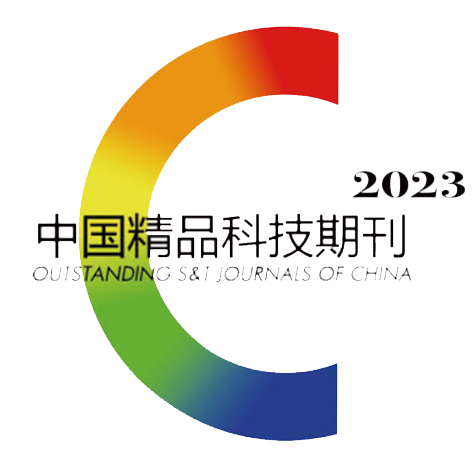| [1] |
刘发万, 秦荣, 李卫芬, 等. 云南少数民族野生蔬菜资源及利用[J]. 长江蔬菜,2020,498(4):62−65.
|
| [2] |
秦惠珍, 邹蓉, 唐健民, 等. 12种清热解毒类药食两用植物研究进展[J]. 广西科学院学报,2019,35(1):24−29.
|
| [3] |
宋秀青. 车前草及白牵牛子的化学成分及活性研究[D]. 济南: 济南大学, 2019: 3−4.
|
| [4] |
多本加. 不同产地积雪草中微量元素的因子分析[J]. 微量元素与健康研究,2010(4):13−14.
|
| [5] |
|
| [6] |
李辉标, 唐洪梅, 陈新林, 等. 积雪草主要化学成分及治疗消化系统疾病的研究进展[J]. 今日药学,2019,29(7):71−74.
|
| [7] |
赵良辰, 李晶, 陈婷, 等. 积雪草药理研究及抗肿瘤等临床应用[J]. 中医肿瘤学杂志,2019,1(2):91−95.
|
| [8] |
热萨莱提·伊敏, 买买提·吐尔逊, 塔伊尔·麦孜尼. HPLC同时测定新疆少花龙葵中绿原酸和芦丁的含量[J]. 中国现代中药,2014,16(11):38−40.
|
| [9] |
朱慧. 少花龙葵叶挥发油成分的鉴定[J]. 西南农业学报,2011,24(1):108−114.
|
| [10] |
马博, 苏仕林, 黄娇丽. 野生芭蕉花与假茎的营养成分分析[J]. 食品工业,2018,39(6):320−323.
|
| [11] |
|
| [12] |
|
| [13] |
Kibar B, Kibar H. Determination of the nutritional and seed properties of some wild edible plants consumed as vegetable in the Middle Black Sea Region of Turkey[J]. South African Journal of Botany,2017(108):117−125.
|
| [14] |
Lu Y H, Huang J H, Li Y C, et al. Variation in nutritional compositions, antioxidant activity and microstructure of Lycopus lucidus Turcz. root at different harvest times[J]. Food Chemistry,2015(183):91−100.
|
| [15] |
杨月欣, 中国疾病预防控制中心营养与健康所. 中国食物成分表2018[M]. 北京: 北京大学医学出版社, 2018.
|
| [16] |
|
| [17] |
Kobeasy M I K, Fatah O M A, Salam S M A, et al. Biochemical studies on Plantago major L. and Cyamopsis tetragonoloba L.[J]. International Journal of Biodiversity and Consevation,2011(3):83−91.
|
| [18] |
Reynolds P S, Fisher B J, McCarter J., et al. Interventional vitamin C: A strategy for attenuation of coagulopathy and inflammation in a swine multiple injuries model[J]. Journal of Trauma and Acute Care Surgery,2018,85:57−67. doi: 10.1097/TA.0000000000001844
|
| [19] |
FAO/WHO. Protein quality evaluation. Report of the joint FAO/WHO expert consultation[J]. FAO Food and Nutrition Paper,1991:51.
|
| [20] |
Solerte S B, Fioravanti M, Locatelli E, et al. Improvement of blood glucose control and insulin sensitivity during a long-term (60 weeks) randomized study with amino acid dietary supplements in elderly subjects with type 2 diabetes mellitus[J]. American Journal of Cardiology,2008a,101(11):82−88. doi: 10.1016/j.amjcard.2008.03.006
|
| [21] |
Solerte S B, Gazzaruso C, Bonacasa R, et al. Nutritional supplements with oral amino acid mixtures increases whole-body lean mass and insulin sensitivity in elderly subjects with sarcopenia[J]. American Journal of Cardiology,2008b,101(11):69−77. doi: 10.1016/j.amjcard.2008.03.004
|
| [22] |
Kirimura J, Shimizu A, Kimizuka A, et al. Contribution of peptides and amino acids to the taste of foods[J]. Journal of Agricultural & Food Chemistry,1969,17(4):689−695.
|
| [23] |
Feng Y Y, Liu Q Q, Shi J Y, et al. Aspartic acid can effectively prevent the enzymatic browning of potato by regulating the generation and transformation of brown product[J]. Postharvest Biology and Technology,2020(166):111209.
|
| [24] |
Gong Q Y, Yang D X, Jiang M, et al. L-aspartic acid promotes fish survival against Vibrio alginolyticus infection through nitric oxide-induced phagocytosis[J]. Fish and Shellfish Immunology,2020(97):359−366.
|
| [25] |
姚翱, 陶宁萍, 王锡昌. 宝石鱼肉氨基酸组成及营养评价[J]. 现代食品科技,2009,25(4):447−450.
|











 DownLoad:
DownLoad: